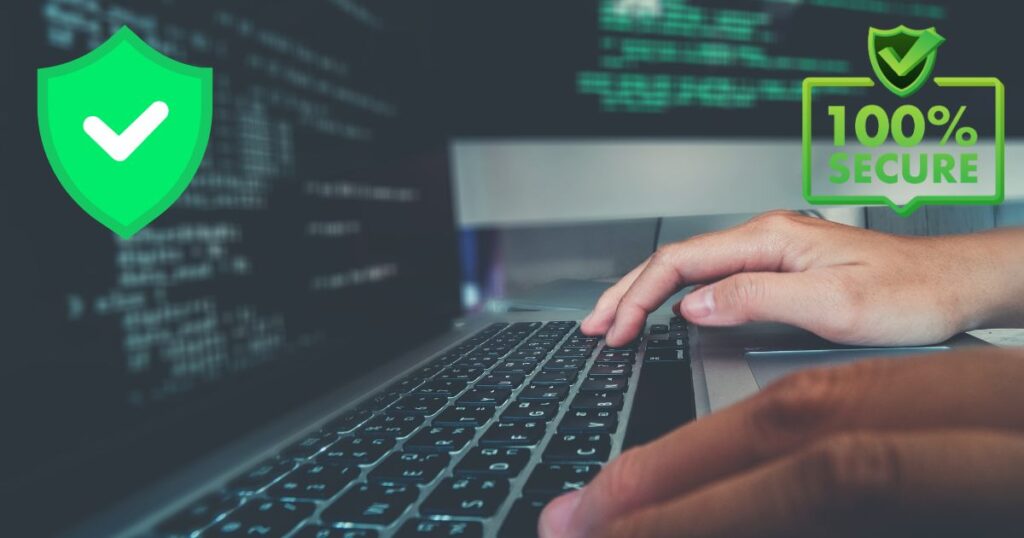In the first quarter of 2024, organizations experienced an average of 1,308 cyber attacks per week, a 28% increase from the previous quarter and a 5% increase year-over-year. Ensuring the security of your website is paramount. With the increasing number of cyber threats and data breaches, website security has become a critical concern for individuals and businesses alike. A compromised website can lead to significant financial losses, damage to reputation, and loss of customer trust. Therefore, it is essential to stay informed about the latest security solutions to protect your online presence.
This article will provide an in-depth look at the most effective strategies and tools for safeguarding your website. We will explore a range of website security measures, from basic practices to advanced technologies, to help you defend against potential threats. Whether you are a tech enthusiast or a website owner looking to enhance your security measures, this guide will equip you with the knowledge and resources needed to protect your site.

Understanding Website Security
What is Website Security?
Website security refers to the measures taken to protect websites from unauthorized access, data breaches, and other cyber threats. It encompasses a wide range of practices and technologies designed to safeguard the integrity, confidentiality, and availability of your website and its data.
Common Threats to Website Security

Understanding the common threats to website security is the first step in defending against them. Some of the most prevalent threats include:
- Malware: Malicious software designed to damage or gain unauthorized access to a website.
- DDoS Attacks: Distributed Denial of Service attacks that overwhelm a website with traffic, causing it to crash.
- SQL Injection: A type of attack that involves inserting malicious SQL code into a website’s database query.
- Cross-Site Scripting (XSS): A vulnerability that allows attackers to inject malicious scripts into web pages viewed by users.
- Phishing: Fraudulent attempts to obtain sensitive information by disguising as a trustworthy entity.
Importance of Website Security
Ensuring website security is crucial for several reasons:
- Protecting Sensitive Data: Safeguarding user data such as personal information, payment details, and login credentials.
- Maintaining Trust and Reputation: A secure website fosters trust among users and helps maintain a positive reputation.
- Compliance with Regulations: Adhering to legal requirements and industry standards for data protection and privacy.
- Preventing Financial Losses: Avoiding the costs associated with data breaches, such as fines, legal fees, and lost revenue.
Basic Website Security Measures
Using Strong Passwords For Website Security
One of the simplest yet most effective ways to enhance website security is by using strong passwords. Ensure that all accounts associated with your website, including admin and user accounts, have strong, unique passwords. A strong password typically includes a combination of upper and lower-case letters, numbers, and special characters.
Implementing Two-Factor Authentication (2FA) for Website Security
Two-factor authentication (2FA) adds an extra layer of security by requiring users to provide two forms of identification before accessing an account. This usually involves something the user knows (a password) and something they have (a mobile device or authentication app). Implementing 2FA can significantly reduce the risk of unauthorized access.
Regular Software Updates For Website Security
Keeping your website’s software up-to-date is essential for maintaining security. This includes the content management system (CMS), plugins, themes, and any other software components. Regular updates often include security patches that address known vulnerabilities.
Secure Hosting Environment For Website Security
Choosing a secure hosting provider is crucial for website security. Look for hosts that offer robust security features such as regular backups, SSL certificates, and DDoS protection. A reliable hosting environment can help prevent many common security issues.
Regular Backups For Website Security
Regularly backing up your website ensures that you can quickly recover your data in case of a security breach or other issues. Automated backups should be scheduled at regular intervals, and backups should be stored in multiple locations.
Installing SSL Certificates For Website Security
An SSL (Secure Sockets Layer) certificate encrypts the data transmitted between your website and its visitors, protecting it from interception by malicious actors. Installing an SSL certificate is essential for any website, particularly those that handle sensitive information.
Limiting User Permissions For Website Security
Limiting user permissions is another effective way to enhance website security. Ensure that users only have access to the information and functionalities necessary for their roles. This minimizes the risk of unauthorized access and reduces the potential impact of compromised accounts.
Advanced Security Solutions
Web Application Firewalls (WAF)
A Web Application Firewall (WAF) is a security solution that filters and monitors HTTP traffic between a web application and the internet. WAFs can protect websites from a variety of threats, including SQL injection, XSS, and DDoS attacks. By analyzing incoming traffic and blocking malicious requests, WAFs help prevent security breaches.
Content Delivery Networks (CDN)
A Content Delivery Network (CDN) can enhance website security by distributing content across multiple servers worldwide. CDNs help mitigate DDoS attacks by absorbing large volumes of traffic and preventing it from overwhelming your website. They also provide additional security features such as SSL/TLS encryption and bot protection.
Intrusion Detection and Prevention Systems (IDPS)
Intrusion Detection and Prevention Systems (IDPS) monitor network traffic for suspicious activity and take action to prevent potential threats. These systems use a combination of signature-based and anomaly-based detection methods to identify and block malicious activity. Implementing an IDPS can help detect and mitigate security incidents in real-time.
Security Information and Event Management (SIEM)
Security Information and Event Management (SIEM) solutions collect and analyze data from various sources to provide a comprehensive view of an organization’s security posture. SIEM tools help detect, investigate, and respond to security incidents by correlating data from multiple sources and generating alerts for suspicious activity.
Vulnerability Scanning and Penetration Testing
Regular vulnerability scanning and penetration testing are essential for identifying and addressing security weaknesses. Vulnerability scanners automatically scan your website for known vulnerabilities, while penetration testing involves simulating attacks to identify potential security flaws. Both practices help ensure that your website remains secure and resilient against threats.
Secure Coding Practices
Implementing secure coding practices is crucial for preventing vulnerabilities in your website’s code. This includes validating user input, using parameterized queries, and avoiding the use of hard-coded credentials. Following secure coding guidelines helps reduce the risk of common vulnerabilities such as SQL injection and XSS.
Threat Intelligence
Threat intelligence involves collecting and analyzing data on current and emerging threats to improve security measures. By staying informed about the latest threats and vulnerabilities, you can proactively address potential risks and enhance your website’s security. Threat intelligence platforms provide valuable insights and updates on the evolving threat landscape.
Case Studies: Real-World Examples
Case Study 1: Equifax Data Breach
In 2017, Equifax, one of the largest credit reporting agencies, experienced a massive data breach that exposed the personal information of over 147 million people. The breach was caused by a vulnerability in a web application framework that had not been updated. This case underscores the importance of regular software updates and patch management in maintaining website security.
Case Study 2: Target Data Breach
In 2013, retail giant Target suffered a data breach that compromised the credit and debit card information of 40 million customers. The breach was initiated through a phishing attack on a third-party vendor, highlighting the importance of securing third-party integrations and implementing robust access controls.
Case Study 3: Yahoo Data Breach
Between 2013 and 2014, Yahoo experienced a series of data breaches that affected all three billion of its user accounts. The breaches were the result of outdated security measures and insufficient encryption practices. This case emphasizes the need for strong encryption and regular security assessments.
Case Study 4: Sony PlayStation Network Hack
In 2011, the Sony PlayStation Network was hacked, leading to the exposure of personal information for 77 million users. The breach was attributed to weak security protocols and inadequate incident response measures. This incident highlights the importance of implementing comprehensive security policies and having an effective incident response plan in place.
Emerging Trends in Website Security

Zero Trust Security
Zero Trust Security is an emerging framework that assumes no user or device, whether inside or outside the network, should be trusted by default. This approach involves continuously verifying and validating users and devices before granting access to resources. Implementing Zero Trust Security can help prevent unauthorized access and mitigate the risk of data breaches.
Artificial Intelligence and Machine Learning
Artificial Intelligence (AI) and Machine Learning (ML) are increasingly being used to enhance website security. These technologies can analyze vast amounts of data to identify patterns and anomalies that may indicate a security threat. AI and ML-powered security solutions can detect and respond to threats in real-time, improving the overall security posture of websites.
Blockchain Technology
Blockchain technology offers potential applications in website security by providing decentralized and tamper-proof data storage. Blockchain can be used to secure transactions, verify identities, and protect data integrity. Its transparency and immutability make it a promising solution for enhancing website security.
Secure Access Service Edge (SASE)
Secure Access Service Edge (SASE) is a security framework that combines network security functions with wide area networking capabilities. SASE provides a unified approach to securing access to resources, regardless of the user’s location. This approach helps protect against threats and ensures secure access to applications and data.
Multi-Factor Authentication (MFA)
Multi-Factor Authentication (MFA) is becoming increasingly popular as a way to enhance website security. MFA requires users to provide multiple forms of identification before accessing an account, making it more difficult for attackers to gain unauthorized access. Implementing MFA can significantly reduce the risk of account breaches.
Security Automation
Security automation involves using automated tools and processes to detect, respond to, and mitigate security threats. Automation can help streamline security operations, reduce response times, and improve the overall efficiency of security measures. As cyber threats become more sophisticated, security automation is becoming an essential component of effective website security.
Practical Tips for Maintaining Website Security
Regular Security Audits
Conducting regular security audits is essential for maintaining website security. These audits involve assessing your website’s security posture, identifying vulnerabilities, and implementing measures to address them. Regular audits help ensure that your security measures are up-to-date and effective.
Employee Training
Educating employees about website security is crucial for preventing security incidents. Provide training on best practices for password management, recognizing phishing attempts, and safely handling sensitive data. An informed and vigilant workforce is an important line of defense against cyber threats.
Secure Third-Party Integrations
Many websites rely on third-party services and plugins for added functionality. While these integrations can be beneficial, they also introduce potential security risks. Ensure that any third-party services you use are reputable and have robust security measures in place. Regularly review and update third-party integrations to maintain security.
Implementing Least Privilege
The principle of least privilege involves granting users the minimum level of access necessary to perform their tasks. Implementing least privilege helps reduce the risk of unauthorized access and minimizes the potential impact of compromised accounts. Regularly review user permissions and adjust them as needed.
Monitoring and Logging
Continuous monitoring and logging of website activity are essential for detecting and responding to security incidents. Implement monitoring tools that provide real-time alerts for suspicious activity and maintain detailed logs of user actions. Analyzing logs can help identify patterns and potential threats, allowing for prompt and effective responses.
Data Encryption
Encrypting sensitive data is crucial for protecting it from unauthorized access. Implement encryption for data at rest and in transit to ensure that sensitive information remains secure. Use strong encryption protocols and regularly update encryption keys to maintain security.
Conclusion
Website security is an ongoing process that requires vigilance, proactive measures, and the adoption of the latest technologies. By understanding the common threats and implementing both basic and advanced security solutions, you can significantly enhance the security of your website. Regularly updating your software, using strong passwords, and employing multi-factor authentication are essential steps in safeguarding your online presence.
Emerging trends such as Zero Trust Security, AI and ML, and blockchain technology offer new opportunities for improving website security. Staying informed about these developments and integrating them into your security strategy can help you stay ahead of potential threats.
Ultimately, maintaining website security is not just about protecting your data; it’s about preserving the trust of your users and ensuring the continued success of your online presence. By following the practical tips outlined in this article, you can create a secure environment that fosters confidence and reliability. Protect your website now and stay ahead in the ever-evolving landscape of cyber threats. For more great articles visit marginseyedigital.com today.

